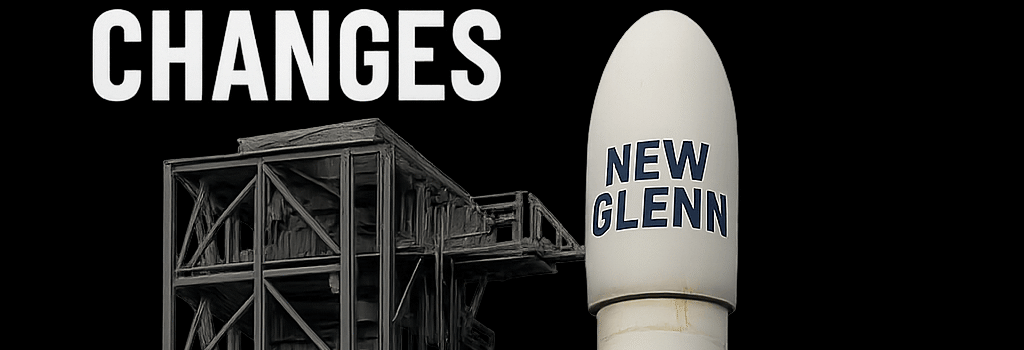New Glenn Launch Delayed Due to Leadership Changes

Blue Origin’s ambition to achieve an eight-flight cadence for its heavy-lift New Glenn rocket in 2025 has encountered fresh turbulence. Originally slated for a late spring liftoff, the vehicle’s second mission has now been postponed until at least August 15, with insiders suggesting September as a more realistic target. Meanwhile, senior program leadership transitions add another layer of complexity to the company’s schedule.
Launch Cadence Setbacks
At a recent all-hands meeting, CEO Dave Limp confirmed that Blue Origin will fall significantly short of the eight-launch goal laid out by Limp and founder Jeff Bezos. After New Glenn’s mostly successful January debut, the company aimed to launch again in late spring. However, technical checks and ground support preparations have pushed the date to late summer.
“One of our key mission objectives will be to land and recover the booster,” Limp wrote on social media. “We’re on track to produce eight GS2s this year, and the one we’ll fly on this second mission was hot-fired in April.”
Deeper Dive into GS2 and BE-4 Engine Production
Glenn Stage 2 (GS2) production is tracking toward eight units in 2025, but the bottleneck remains the BE-4 engine line. Each BE-4 turbopump incorporates advanced ceramic bearings and staged-combustion chambers operating at 2,750 psi chamber pressure. While Linda Cova, SVP of engines, is retiring after overseeing steady throughput increases at the engine plant in Huntsville, Alabama, the nuances of final assembly, hot-fire testing, and acceptance reviews continue to constrain schedule flexibility.
- Chamber pressure validation at 110 percent thrust level
- High-pressure helium tank certification and leak checks
- Performance margin analysis against vacuum thrust spec of 599,000 lbf
Program Management Changes
On May 28, Limp announced an organizational update: Linda Cova’s retirement and Jarrett Jones’s decision to begin a year-long sabbatical as SVP of New Glenn. Industry sources suggest Jones’s departure may correlate with pressure from Bezos, who has been vocal about urgency in second-stage manufacturing and flight rate. The search for new leadership—both internal and external—is now a critical path activity.
Supply Chain and Manufacturing Bottlenecks
Scaling from one demonstration flight to a regular cadence exposes supply chain vulnerabilities. Key vendors for carbon composite tank structures and avionics harnesses have struggled to meet just-in-time delivery windows. Additionally, thermal-control system upgrades for reusability inspections have added to integration time on the Cape Canaveral processing flow.
Competitive Landscape and Government Contracts
With SpaceX dominating the market and ULA pursuing its Vulcan rockets, Blue Origin is under pressure to offer a reliable alternative for DoD and NASA. The upcoming ESCAPADE payload for NASA’s heliophysics program underscores the importance of New Glenn’s next flight. A high-performance trajectory and successful booster recovery would strengthen Blue Origin’s case for future contracts.
Future Outlook and Programmatic Adjustments
Blue Origin must balance technical excellence with aggressive scheduling. Expert analysts note that adding parallel assembly lines for GS2 and streamlining ground-support equipment checks could shave weeks off processing time. Bezos’s push for urgency around the “machine that makes the machine” reflects a broader industry trend toward lean aerospace manufacturing.
Key Takeaways
- Second New Glenn launch delayed to August or September due to testing and integration needs.
- BE-4 engine line healthy but still a critical pacing element for stage production.
- Leadership changes may impact program momentum; candidate search is underway.
- Supply chain and manufacturing optimizations are on the critical path to higher cadence.
- Successful ESCAPADE deployment and booster recovery could secure future federal contracts.
By expanding manufacturing capacity, implementing lean integration processes, and securing a steady leadership pipeline, Blue Origin aims to overcome current delays and position New Glenn as a competitive, reusable heavy-lift launch vehicle.